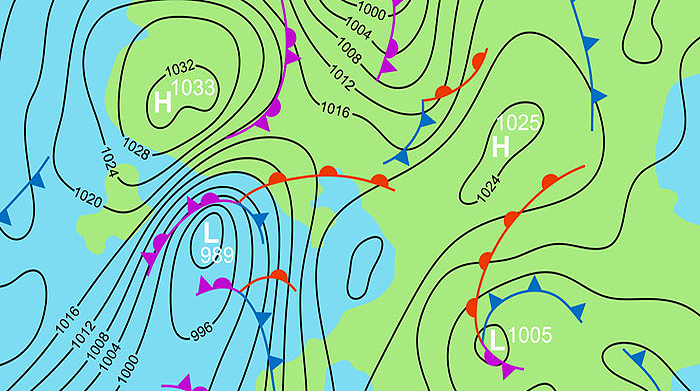Weather Prediction Models for Electric Utilities

The trouble with weather forecasting is that it’s right too often for us to ignore it and wrong too often for us to rely on it. ~ Patrick Young
Weather prediction models? Ha! Sometimes I wish I was a meteorologist. In fact, if I could do it all over again, who knows, I just might choose this career path! I mean, what other type of job exists where there is an acceptance – and in fact, an expectation – of frequent inaccuracies? Heck, I could do that!
In all seriousness, predicting the weather really is a challenge, and although 100% accuracy is not possible, weather prediction systems have improved dramatically over the past few decades. This is great news for electric utilities, as destructive weather conditions are the root cause of many widespread and long duration outages. In fact, storm-related outages from wind, rain, lightning, snow, ice, hurricanes, tornados and other weather events cost the US economy anywhere from $22-$50 billion each year, and this number is on the rise thanks to the gradually increasing frequency of severe weather.
Access to one or more weather prediction models (sometimes known as storm models or damage models) that translate weather data into possible outage data is critical for a utility’s success to quickly respond to these events. The ability to effectively monitor and forecast severe weather that disrupts electric service affords utilities more time to plan and mobilize resources. At the first indication of potentially damaging storm conditions, critical information can be mined that helps facilitate pre-event planning, the proactive alert of customers, the acceleration of resource mobilization, and the timely activation of the EOC, among other benefits. Simply put, utilities that excel in this area are able to get a leg up on storm preparations and reduce restoration times and costs.
Weather Prediction for Tonight: Dark
Ah, if only it was as easy as the sub-heading above implies! Unfortunately, it’s not. However, we can certainly touch upon some of the basic, underlying practices and approaches that separate good prediction models from great ones. Although I’m not a technology guru, I can say with absolute certainty that there is no one-size-fits-all approach when it comes to weather prediction technology, functionality and design – the optimal solution will vary dramatically from utility to utility.
Obviously all solutions leverage third-party monitoring services such as the National Weather Service, but how this monitoring is internally leveraged, configured and optimized will vary widely – for example, some utilities might prefer a spreadsheet-based solution whereas others might require a web-based solution, or some might require real-time data whereas others will accept hourly updates. Preferences and requirements can also differ in terms of the degree of automation desired, the level of system integration, security and/or permission configurations, and many other elements.
With that being said, even though there is no one-size-fits-all approach, there are some commonalities across best-in-class prediction models. For example, using data from multiple weather sources is recommended to improve confidence in the forecasts, and when severe weather is imminent, the best models leverage these sources to make predictions around scope of damage, number of outages, number of crews needed, and geographical placement of crews. Additionally, best-in-class models can forecast best and worst case scenarios, determine the amount of uncertainty in forecasts, calculate the potential breadth of impact to other utilities, and incorporate algorithms that learn over time to improve prediction accuracy as more and more events occur.
When a severe weather event is immanent, most weather prediction models will analyze thousands of data points to determine the path and potential severity of the storm. Participation in mutual assistance group conference calls can provide additional intelligence, as many times the weather may already be impacting other member utilities. With this information, best-in-class utilities then leverage internal metrics to numerically rank and classify the event based on magnitude. Any storm that exceeds a pre-designated classification threshold should trigger a process to notify the key stakeholders, often leading to the scheduling of a briefing to determine whether or not to activate the emergency response plan. Of course, it goes without saying that the entire threshold and notification process should be well-documented.
One final point – severe wind, rain and snow get most of the headlines, but keep in mind that lightning-related outages are also problematic. In fact, lightning-related outages are estimated to cost the nation’s utility industry over $100 million annually (for Duke Power, lightning causes nearly 90% of its power outages during the summer months). Thus, forecasts of storms that have a high probability of intense electrical activity are helpful, and leveraging this information has helped Duke Power save an estimated $200k annually in reduced outage time.
Ultimately, whether you’re a person or a utility company, feeling “under the weather” is no fun at all! In the final analysis, there’s simply no doubt about it – improvements in severe weather forecasting can have a large, positive impact on an electric utility’s bottom line.

